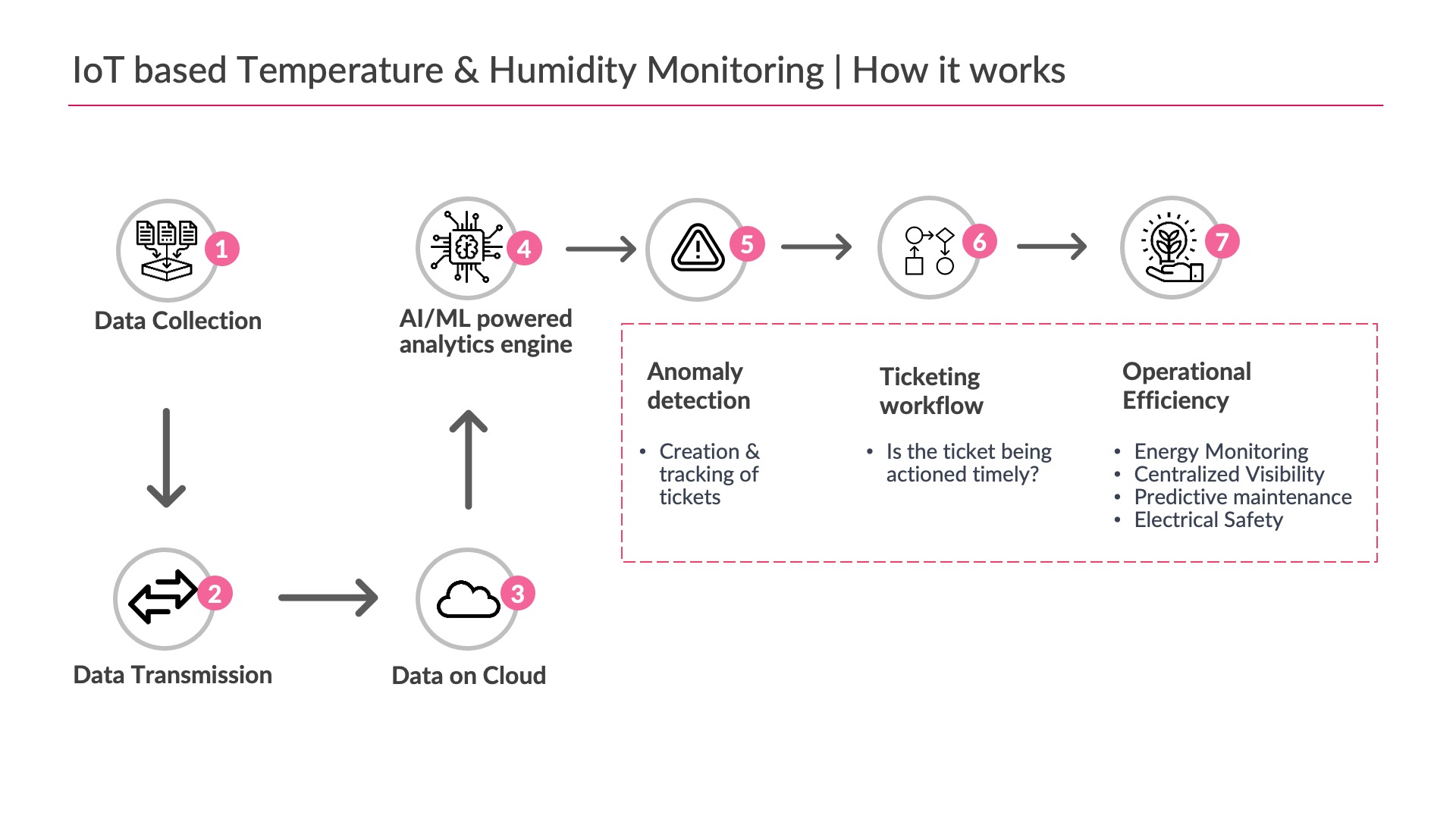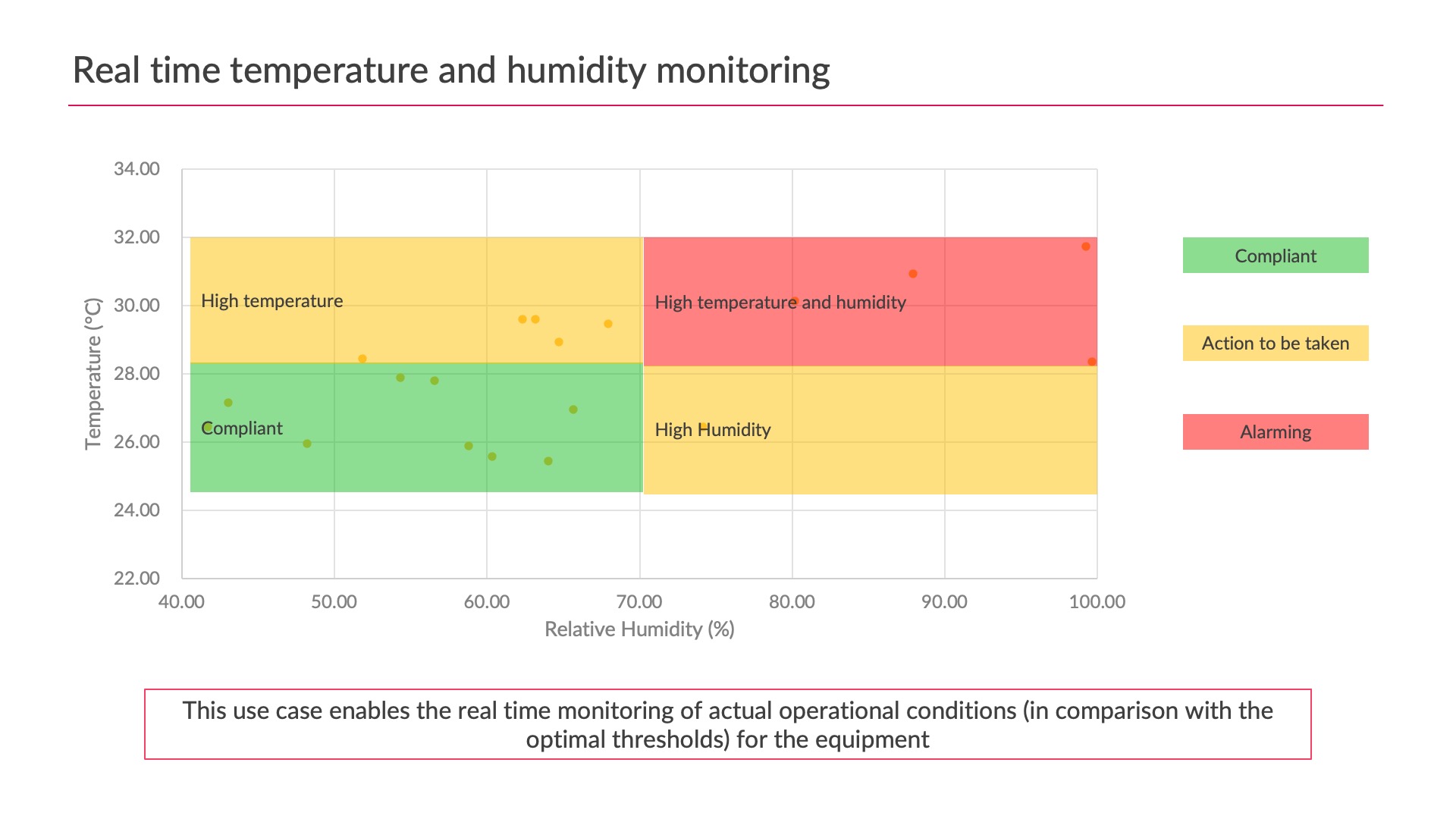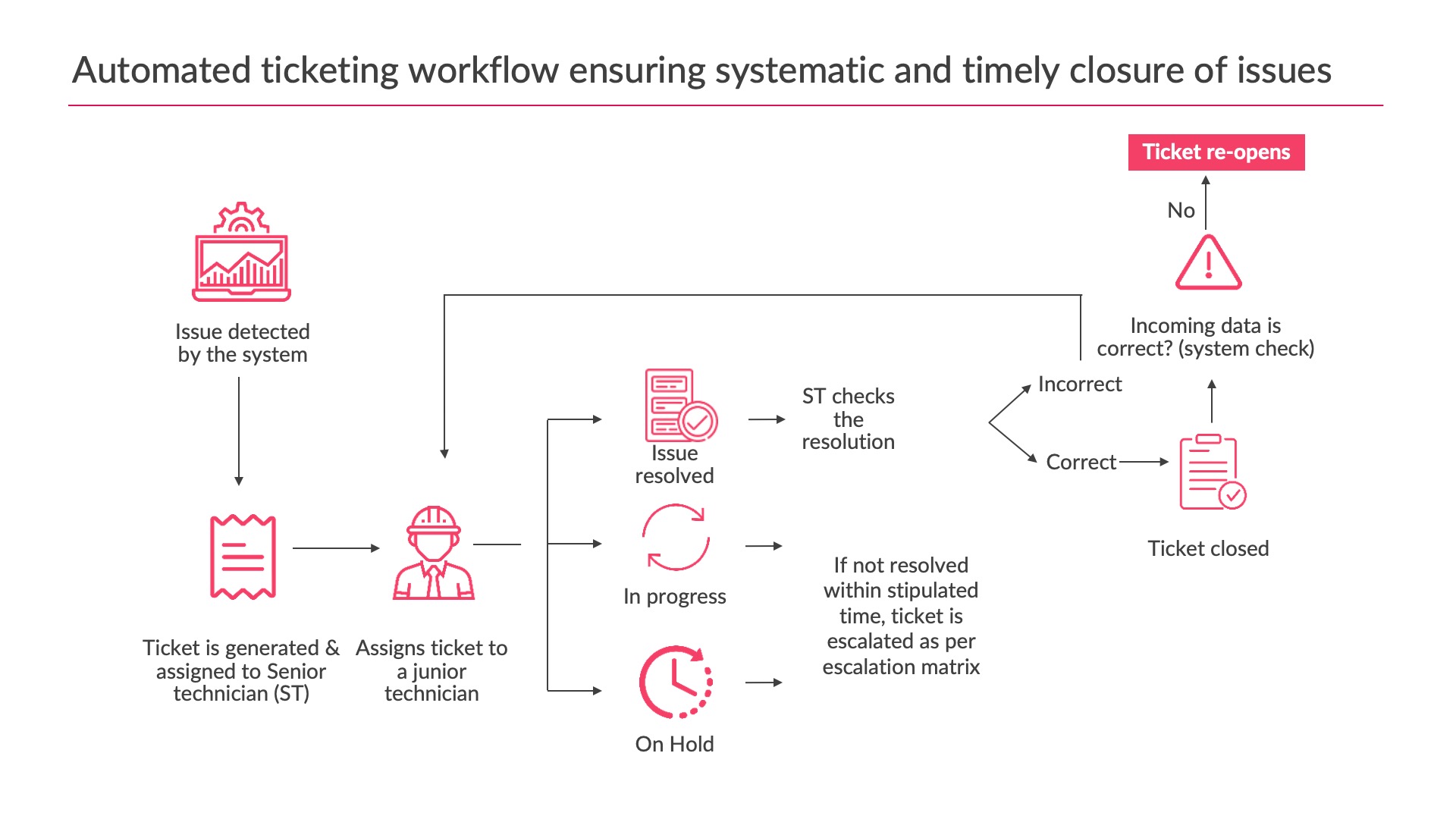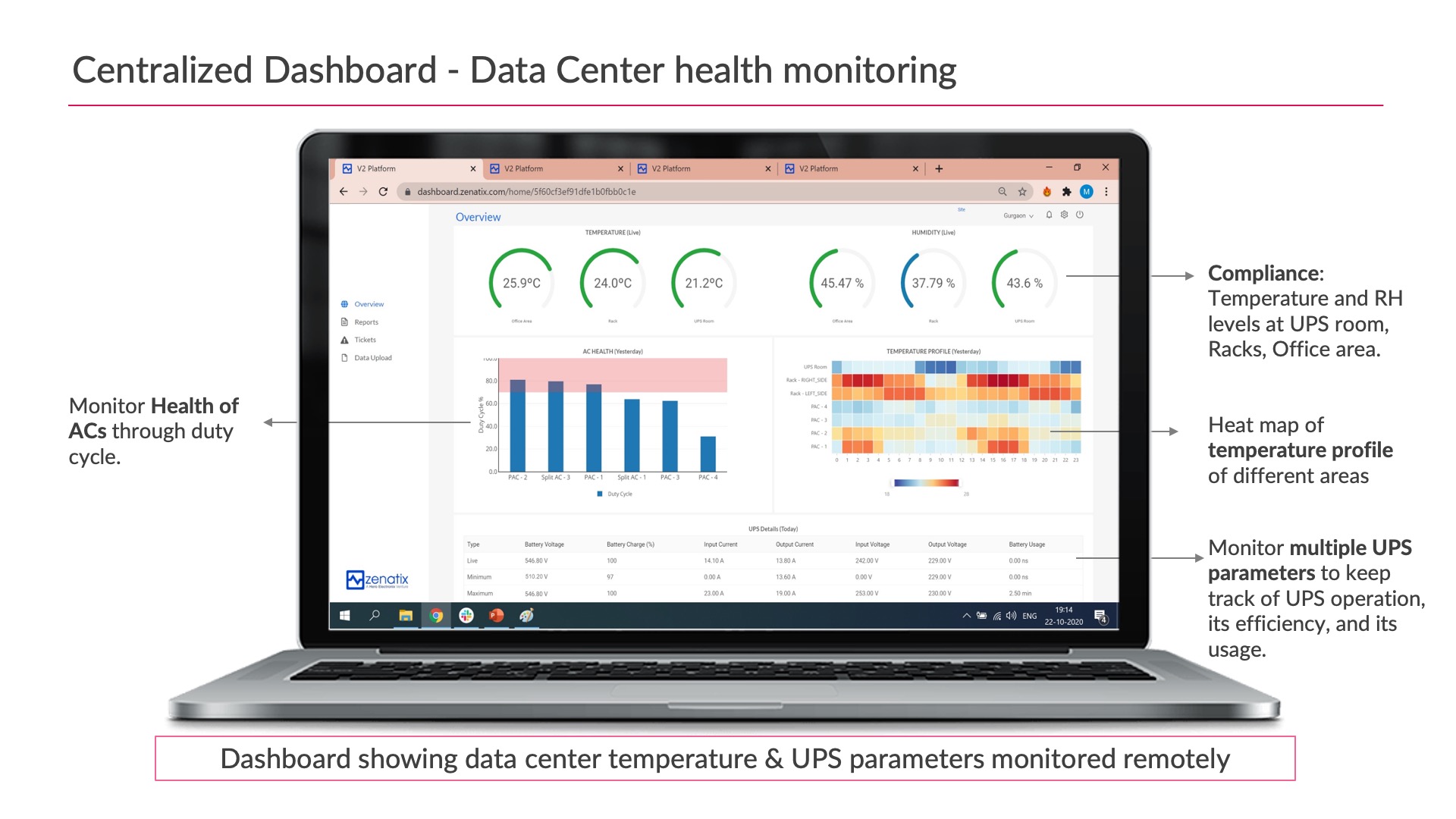Keep up with the latest IoT-based building automation, and follow us on LinkedIn!
Temperature & humidity monitoring in data centers is critical to ensure the security of all data storage and processing operations. Failure of such systems can result in customer dissatisfaction, significant economic losses, and damage to brand reputation. Heat and humidity are the leading causes of data center failures.
We live in a digital economy where data is more valuable than ever, and so is the infrastructure that manages it. A data center is a physical structure that houses and manages the data. The design of a data center is based on a network of computing and critical storage resources, forming a complex infrastructure that’s vulnerable to failures & disasters. Hence, it’s undeniably preferable for businesses to take precautions to protect data centers even before disaster strikes, but the limitations of manual operations and the inertia of day-to-day operations make it easy to overlook such threats.
The temperature and humidity levels of the air are critical in increasing the data center’s effectiveness. Many factors contribute to the server environment being less conducive, such as the influence of temperature, which, if too high, can cause hardware damage and too low can require a lot of electrical power, resulting in electricity waste.
Another factor is the humidity level. Too much humidity can damage the server’s hardware, while too little humidity can cause static electricity in the server room. Moreover, lower humidity increases the possibility of electrostatic discharge. ESD can destroy the equipment completely. It’s not only costly, but it can also result in downtime. The troubling part is that not all ESD events can be easily identified, and they tend to occur gradually. These are easy to miss by humans, making the chances of detecting them before they cause too much damage negligible. Elevated humidity creates its own set of issues. Disk drives are also susceptible to failure in high humidity, resulting in data loss and downtime.
Automated temperature & humidity monitoring in data centers can help organizations save money, increase operational efficiency, and reduce their carbon footprint all at the same time. Temperature and humidity sensors strategically placed around the data center can help data center managers get real-time information on how hot, cool, or humid the facility is. With this information, IT staff will be able to determine whether to adjust cooling mechanisms, potentially eliminating hot spots, and avoiding costly server room fires. Maintaining optimal temperatures will result in less downtime and a longer life for your servers and rack-mounted equipment.
How do IoT-based temperature & humidity monitoring in data centers work?

IoT-powered wireless temperature and humidity sensors continuously collect temperature and humidity data from the ambient environment and server racks. Such data is then sent to the cloud for AI/ML-based computation to make sense of it. Following data processing, actionable insights are displayed on a centralized web-based dashboard that can be accessed from any laptop or smartphone. Such dashboards enable IT managers to continuously monitor the data center’s real-time temperature and humidity levels.

Furthermore, an IoT-powered system is not just limited to monitoring. In the event of an abnormality, such as temperature or humidity fluctuations outside of the normal range, it can generate a digital ticket and send alerts via SMS and email to the appropriate personnel for rectifications. The tickets are also recorded in the dashboard. When the problem is resolved, the ticket automatically closes. If the problem is not resolved, the ticket will be reopened.

- Automated asset & equipment control for better energy optimization
- Predictive maintenance via fault detection & diagnosis to ensure higher equipment uptime
- Extensive backup monitoring for a single window view of critical assets
ZenConnect is an enterprise IoT solution for Data Centers that helps in maintaining higher operational efficiency by reducing equipment downtime and reporting any abnormalities at the earliest. It also monitors the temperature and humidity levels inside Data Centers and enables remote asset management through a centralized cloud platform. Some of the proven benefits include up to 30% better temperature compliance, 15% lower energy costs, and 25% reduction in equipment breakdown.

Get in touch with our IoT experts to know more about ZenConnect and how it can help your organization achieve operational excellence & energy efficiency.
Keep up with the latest IoT-based building automation, and follow us on LinkedIn!
